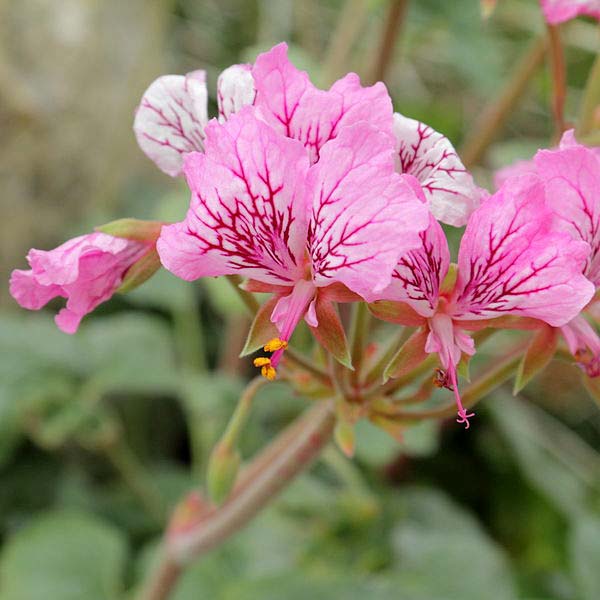Pelargonium Endlicherianum
Pelargonium Endlicherianum is native to the mountains of Turkey and Armenia. This is the only pelargonium species that grows so far north! Most pelargoniums and geraniums (they belong both the geraniaceae family) are native to Southern Africa. The common name is Turkish Pelargonium.

Photo: CT Johansson
This plant is a true gem! Yet, it is not easy to grow and to care for. It is something for the experienced gardener and plant lover.
It is a perennial, herbaceous plant that grows about up to 50 centimetres (two feet) tall.
It is a rockery plant and suitable for xeriscaping, for rock gardens and alpine garden.
This plant prefers to grow in full sun to partial shade but is susceptible to strong winds and waterlogging. It is best to plant it south, in a sheltered place. It requires rich, gritty soil that is kept fairly well-drained.
It is considered to be a drought tolerant plant, but be careful not to let it dry out. The foliage will wilt, turn yellow and will fall off and the plant will finally fall into dormancy when not enough water is provided. So, water it again as soon as the soil is getting moderately dry.
The erect and unbranched stems bear the large, pretty flowers in umbel-like clusters. The flowers have five petals (two very large ones and three small ones) and their colour is magenta-pink to deep rose with two larger upper petals that are marked with five deep pink veins The flowers attract various insects like bees and butterflies as well as hummingbirds.
The leaves are roundish, slightly five-lobed and form rather closed tufts like low domes on the surface.
Although it is known to be winter-hardy, it is still vulnerable to very cold climate and wet winters. It is best to cover them with mulch or any other suitable protection.
Propagation: They can be grown from stem cuttings, seeds or serpentine layering.
Return from Pelargonium Endlicherianum to Scented Geraniums
Return from Pelargonium Endlicherianum to Homepage